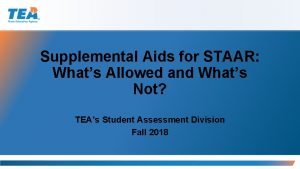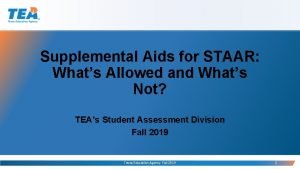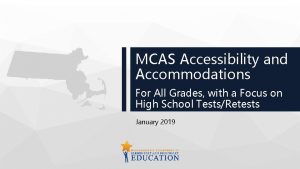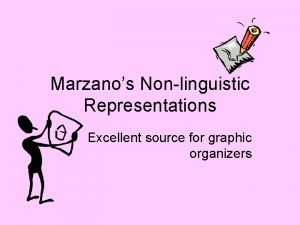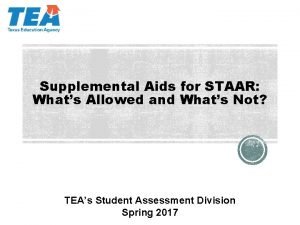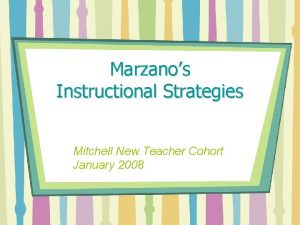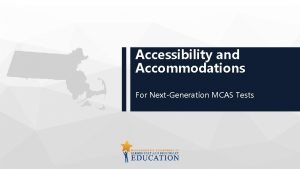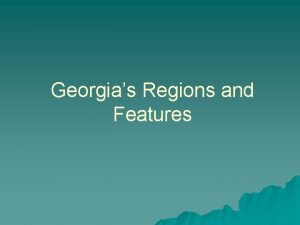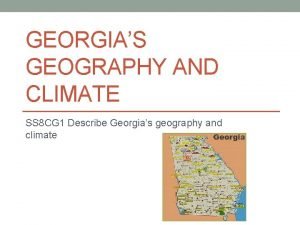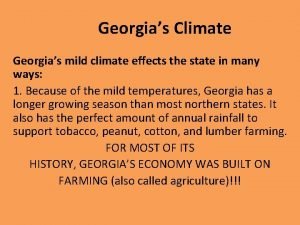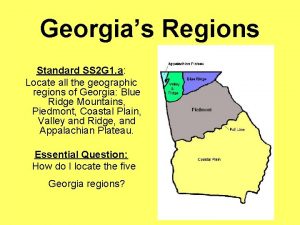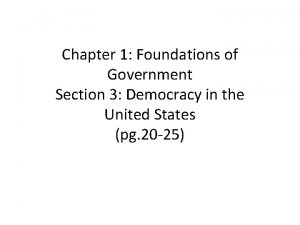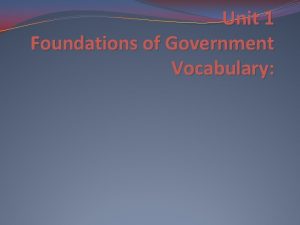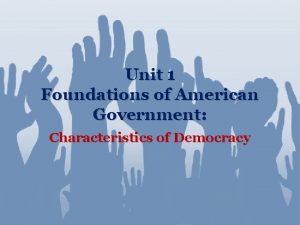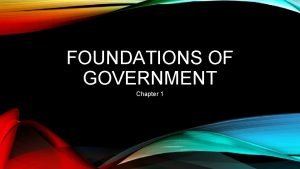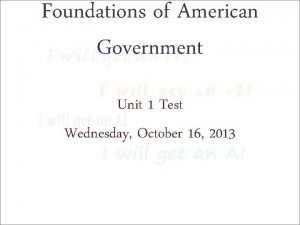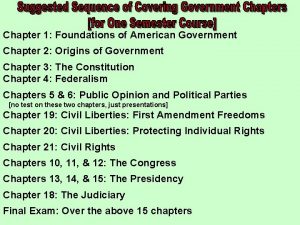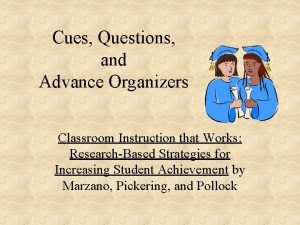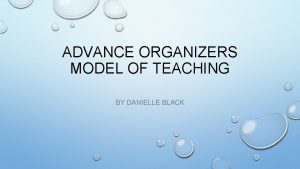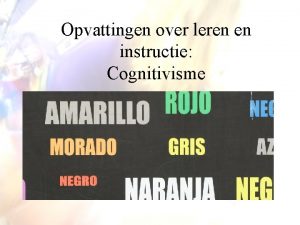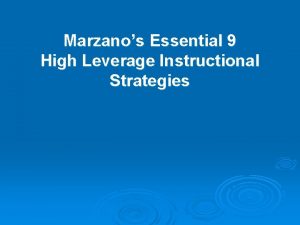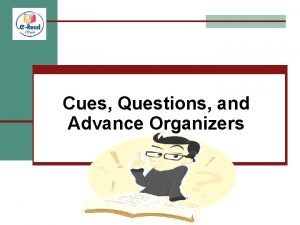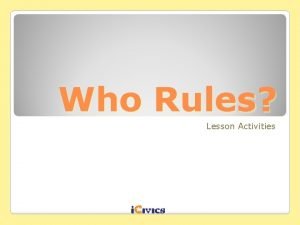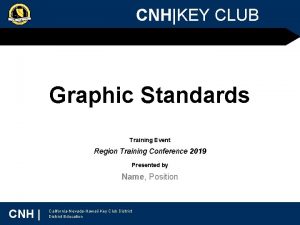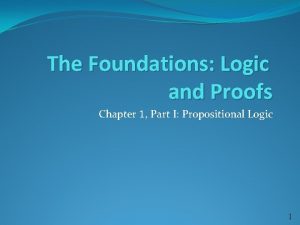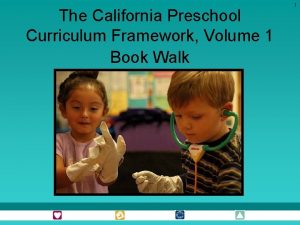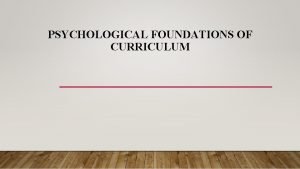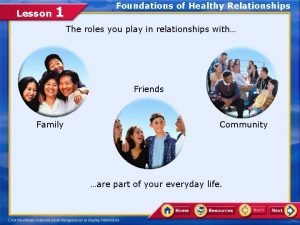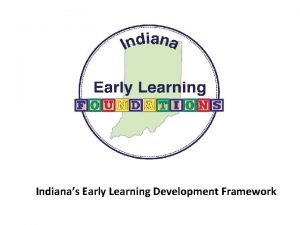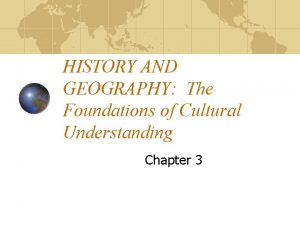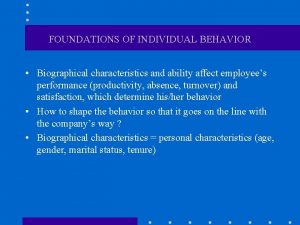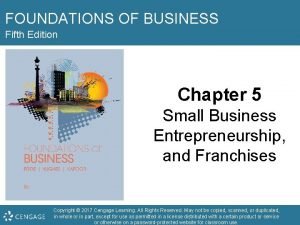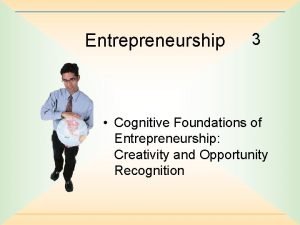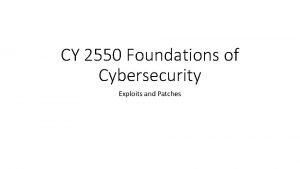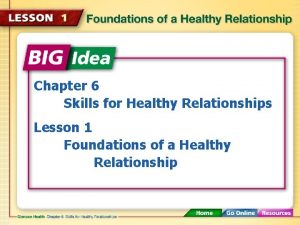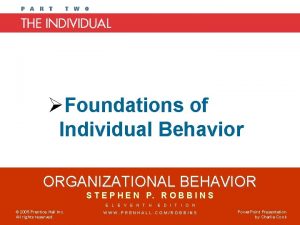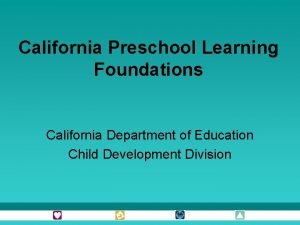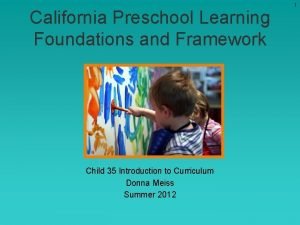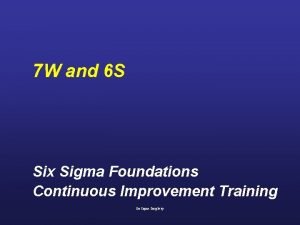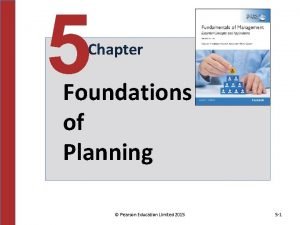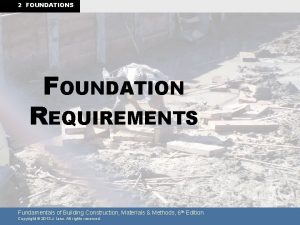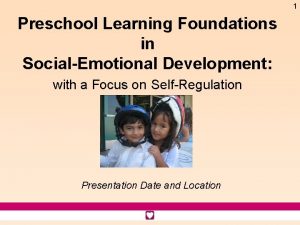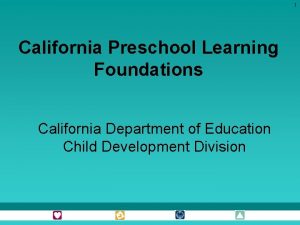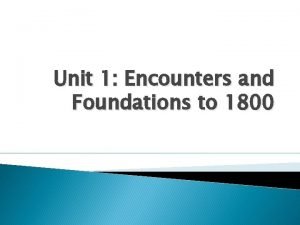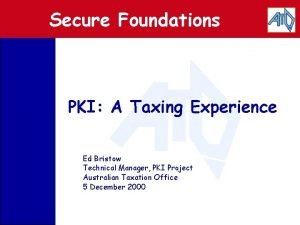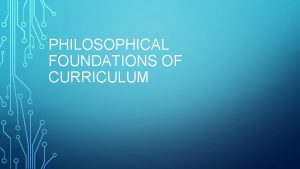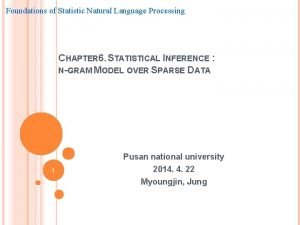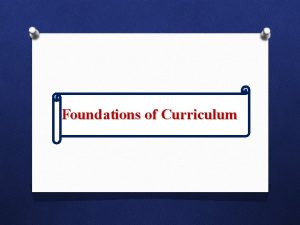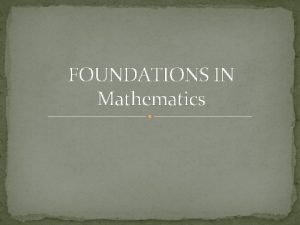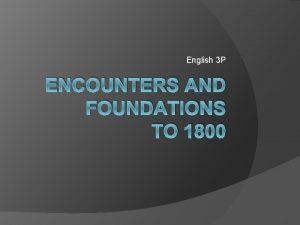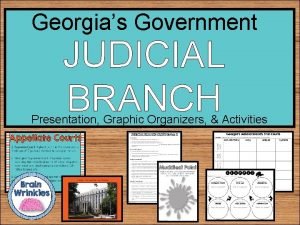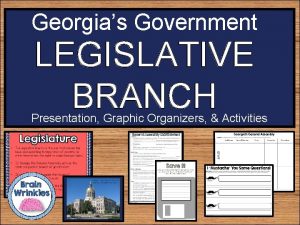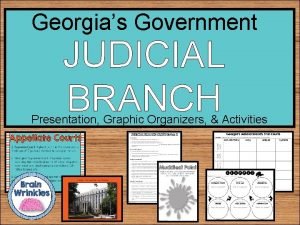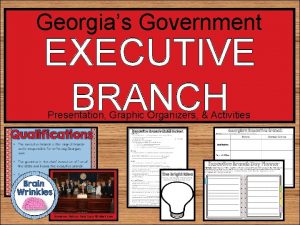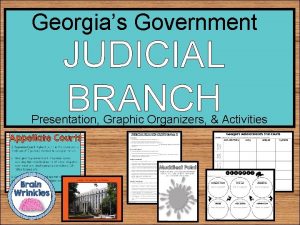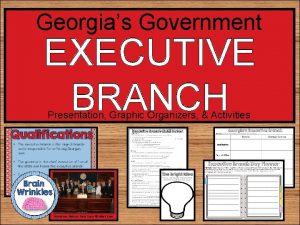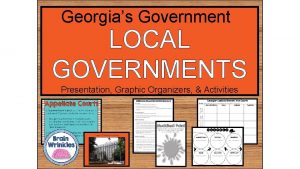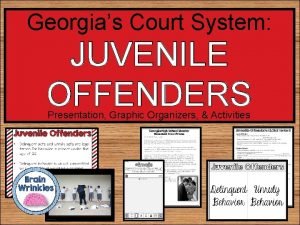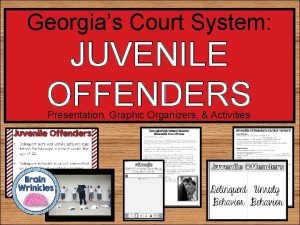Georgias Government FOUNDATIONS Presentation Graphic Organizers Activities STANDARDS
















































































- Slides: 80

Georgia’s Government FOUNDATIONS Presentation, Graphic Organizers, & Activities

STANDARDS: SS 8 CG 1 The student will describe the role of citizens under Georgia’s constitution. a. Explain the basic structure of the Georgia state constitution. b. Explain the concepts of separation of powers and checks and balances. c. Describe the rights and responsibilities of citizens. d. Explain voting qualifications and elections in Georgia. e. Explain the role of political parties in government. f. Identify wisdom, justice, and moderation as the three principles of the Pledge of Allegiance to the © Brain Wrinkles

TEACHER INFO: CLOZE Notes • The next pages are handouts for the students to use for note-taking during the presentation. (Print front to back to save paper and ink. ) • Check the answers as a class after the presentation. © Brain Wrinkles

GA’s Government CLOZE Notes 1 Constitution • A constitution establishes the relationship between a government and ______. • The ____________________ of state government are defined by the state constitution. • Georgia’s government has operated ___________________, beginning in 1777. • The current constitution was ____________________. The Set Up • The Georgia Constitution is based on many of the same principles as the United States Constitution and is ______________. • It begins with a preamble and is ____________________ that address the different branches and duties of government. Preamble • Georgia’s preamble is a short paragraph that states the purpose of the constitution and gives the ____________________. • “To perpetuate the ____________________ , insure justice to all, preserve peace, promote the ____________________ and of the family, and transmit to posterity the enjoyment of liberty, we the people of Georgia, relying upon the protection and guidance of Almighty God, do ordain and establish this Constitution. ” Article I • Article I contains the state’s ____________________. • This article states the specific ____________________ and the government’s limits. • Some of these rights include: right to life, liberty, and property, ____________________ , freedom of the press, and the right to defend oneself in court. • The United States Constitution and the Georgia Constitution both ____________________. . Article II • Article II sets ____________________ and rules for elections. It states elections must be by ______________and law-abiding. It also tells who is _________________ in Georgia. Article II establishes the steps to take in a _____________. It also describes what to do if a public official is • • © Brain____________________ Wrinkles

GA’s Government CLOZE Notes 2 Article III • Article III describes the structure of powers ____________________ (Senate and House of Representatives). • It not only outlines the functions of the two houses of the General Assembly, but also explains how ____________________. Article IV • Article IV sets up Georgia’s ____________________. • It provides a ____________________ that ensures the rights of people who work for the state of Georgia, a State Board of Pardons and Paroles that deals with people in prison, a ____________________ that oversees utilities such as water and electricity, a State Transportation Board, a Veterans Service Board, and a Board of Natural Resources. Article V • Article V establishes the qualifications and ____________________ and lieutenant governor. • It also explains the ____________________ of the governor. • In addition, it ____________________ in Georgia’s executive branch of government. Article VI • Article VI establishes the ____________________. • It outlines the court system and gives the purposes and limits of Georgia’s ____________________ : magistrate, probate, juvenile, state, superior, Court of Appeals, and Supreme Court. Article VII • Article VII authorizes the ____________________. • It lists reasons why the state may tax its citizens and explains the methods and ____________________. Article VIII • Article VIII explains how the ____________________ is supported by taxes and how the Board of Education oversees it. • It also outlines the ____________________ at the state and local levels. Article IX • Article IX describes the powers and structure of ____________________. © Brain Wrinkles

GA’s Government CLOZE Notes 3 Article X • Article X describes the ____________________ Georgia’s Constitution. • It may be amended in two ways. • First, through ____________________. • A state senator or representative must introduce the proposed amendment and if ____________________ accept the change, then it goes before the people for a vote. If the majority of voters ratify the amendment, it becomes part of the constitution. • The second way is by ____________________. • If two-thirds of each house of the General Assembly agrees to call such a convention, then delegates to the convention will meet to discuss and ____________________ to the constitution. • If the convention votes in favor of a proposed amendment, then the amendment ____________________ for a vote. • It becomes part of the Constitution if a majority of the voters vote in ____________________. Article XI • Article XI states the ____________________. • These provisions deal mostly with history and legal continuity—how Georgia’s different constitutions have been ____________________. Three Branches • Like the government of the United States, Georgia’s government is divided into ____________________. • Each branch has a ____________________ , which is called separation of powers. • The legislative branch (General Assembly) _________________ that citizens must obey. • The executive branch (governor) is the head of the government who ____________________. • The judicial branch (courts) ____________________. Checks and Balances • So that one branch ____________________ , the branches put limits, or checks, on each other. • If one branch makes an error, another branch can ____________________ , or balance it. • This system of limiting the roles of each branch and setting right another branch’s error is called ____________________. © Brain Wrinkles

GA’s Government CLOZE Notes 4 Rights • The US Constitution and the Georgia Constitution both give all ____________________. • Rights are standards that keep institutions from ____________________. • The Bill of Rights in Georgia’s Constitution ____________________ of the citizens: • Right to ____________________ , right to keep and bear arms, right to trail by jury, right to a lawyer, etc. Responsibilities • Along with rights come ____________________. • Laws made by the government ____________________. • As citizens, we have responsibilities to take care of ourselves, respect the rights of others, and ____________________ Qualifications • Article II outlines the ____________________ for elections: • You must be a ____________________ of Georgia and of the county where you wish to vote. • You must be at least ____________________ of age. • A person cannot vote if s/he is ____________________ for a felony conviction or has certain mental disabilities. Elections • Citizens register to vote on a ____________________. • Voters cast their ballots at a ____________________ near their home. • Polling places are open from 7 am to 7 pm on Election Day, and employers are required to give their employees up to ____________________. • If you are unable to vote on Election Day, you can cast an ____________________ by mail before the election. • Each fall, Georgians vote for a ____________________ , depending on the year. • Every four years, citizens vote for officers in their ____________________. • ____________________, Georgians vote for members of the state’s General Assembly. • Every four years, there are ____________________ and lieutenant governor. • On the national level, ____________________ are held every four years on the first Tuesday of November. © Brain Wrinkles

GA’s Government CLOZE Notes 5 Political Party • Political parties are groups of people who join together because of ____________________. • They play an important ____________________ and provide opportunities for citizens to participate in the political process. • Voters do not have to join a political party; however, the people they vote for are usually ____________________. • Identification with a party makes it easier for a voter to know what the ____________________. Functions • Recruiting and ____________________ • ____________________ about campaign issues • Helping candidates ____________________ • ____________________ of the elected official 2 Party System • There are ____________________ in the US: Democratic Party and Republican Party. • Although there are other parties, one of the two major parties usually ____________________ (on a national level and in Georgia). • From time to time, people feel that neither party represents their ideas and ____________________ are formed to challenge the two major parties. • Third party candidates ____________________ ; however, they are valuable because they introduce new ideas or issues that should not be ignored. © Brain Wrinkles

GA’s Government CLOZE Notes 6 State Flag • Georgia’s current state flag was ____________________. • It has three red and white stripes and the state ____________________ is in the upper left corner on a blue background. • The coat of arms has an ____________________ and three pillars that represent the legislative, judicial, and executive branches. • The words ____________________ are wrapped around the pillars. The Pledge • ____________________, the Georgia legislature adopted the Pledge of Allegiance to the Georgia Flag. • “I pledge allegiance to the Georgia flag and to the ____________________ Wisdom, Justice, and Moderation. ” • The ____________________ of the Pledge of Allegiance are the same ones displayed on the coat of arms. 3 Principles • Wisdom reminds the legislative branch to be ____________________. • Justice appeals to the judicial branch for ____________________. • Moderation urges the executive branch to ____________________ within the boundaries of the law. © Brain Wrinkles

GA’s Government CLOZE Notes 1 KEY Constitution • A constitution establishes the relationship between a government and its people. • The structure and powers of state government are defined by the state constitution. • Georgia’s government has operated under 10 different constitutions, beginning in 1777. • The current constitution was ratified in 1983. The Set Up • The Georgia Constitution is based on many of the same principles as the United States Constitution and is structured similarly. • It begins with a preamble and is followed by eleven articles that address the different branches and duties of government. Preamble • Georgia’s preamble is a short paragraph that states the purpose of the constitution and gives the reasons for its existence. • “To perpetuate the principles of free government, insure justice to all, preserve peace, promote the interest and happiness of the citizen and of the family, and transmit to posterity the enjoyment of liberty, we the people of Georgia, relying upon the protection and guidance of Almighty God, do ordain and establish this Constitution. ” Article I • Article I contains the state’s Bill of Rights. • This article states the specific rights of citizens and the government’s limits. • Some of these rights include: right to life, liberty, and property, freedom of speech, freedom of the press, and the right to defend oneself in court. • The United States Constitution and the Georgia Constitution both have a Bill of Rights. Article II • Article II sets qualifications for voting and rules for elections. • It states elections must be by secret ballot and law-abiding. • It also tells who is allowed to vote in Georgia. • Article II establishes the steps to take in a run-off election. • It also describes what to do if a public official is found guilty of a serious crime. © Brain Wrinkles

GA’s Government CLOZE Notes 2 KEY Article III • Article III describes the structure of powers given to the General Assembly (Senate and House of Representatives). • It not only outlines the functions of the two houses of the General Assembly, but also explains how bills are passed into laws. Article IV • Article IV sets up Georgia’s government bodies. • It provides a State Personnel Board that ensures the rights of people who work for the state of Georgia, a State Board of Pardons and Paroles that deals with people in prison, a Public Service Commission that oversees utilities such as water and electricity, a State Transportation Board, a Veterans Service Board, and a Board of Natural Resources. Article V • Article V establishes the qualifications and terms of the governor and lieutenant governor. • It also explains the duties and powers of the governor. • In addition, it lists other elected positions in Georgia’s executive branch of government. Article VI • Article VI establishes the state court system. • It outlines the court system and gives the purposes and limits of Georgia’s seven types of courts: magistrate, probate, juvenile, state, superior, Court of Appeals, and Supreme Court. Article VII • Article VII authorizes the power to tax. • It lists reasons why the state may tax its citizens and explains the methods and limits of taxation. Article VIII • Article VIII explains how the public education system is supported by taxes and how the Board of Education oversees it. • It also outlines the structure of the school system at the state and local levels. Article IX • Article IX describes the powers and structure of county and city governments. © Brain Wrinkles

GA’s Government CLOZE Notes 3 KEY Article X • Article X describes the process to amend Georgia’s Constitution. • It may be amended in two ways. • First, through Proposals by the General Assembly. • A state senator or representative must introduce the proposed amendment and if twothirds of both houses accept the change, then it goes before the people for a vote. If the majority of voters ratify the amendment, it becomes part of the constitution. • The second way is by constitutional convention. • If two-thirds of each house of the General Assembly agrees to call such a convention, then delegates to the convention will meet to discuss and vote on possible changes to the constitution. • If the convention votes in favor of a proposed amendment, then the amendment goes before the citizens for a vote. • It becomes part of the Constitution if a majority of the voters vote in favor of the change. Article XI • Article XI states the miscellaneous provisions. • These provisions deal mostly with history and legal continuity—how Georgia’s different constitutions have been changed over the years. Three Branches • Like the government of the United States, Georgia’s government is divided into three different parts. Each branch has a different role, which is called separation of powers. The legislative branch (General Assembly) makes the laws that citizens must obey. The executive branch (governor) is the head of the government who enforces the laws. The judicial branch (courts) interprets the laws. • • Checks and Balances • So that one branch doesn’t become too powerful, the branches put limits, or checks, on each other. • If one branch makes an error, another branch can set it right, or balance it. • This system of limiting the roles of each branch and setting right another branch’s error is called checks and balances. © Brain Wrinkles

GA’s Government CLOZE Notes 4 KEY Rights • The US Constitution and the Georgia Constitution both give all citizens basic rights. • Rights are standards that keep institutions from harming people’s freedom. • The Bill of Rights in Georgia’s Constitution lists the rights of the citizens: • Right to freedom of speech and religion, right to keep and bear arms, right to trail by jury, right to a lawyer, etc. Responsibilities • Along with rights come rules and responsibilities. • Laws made by the government protect people’s rights. • As citizens, we have responsibilities to take care of ourselves, respect the rights of others, and obey rules and laws. Qualifications • Article II outlines the voting qualifications for elections: • You must be a citizen of the United States. • You must be a legal resident of Georgia and of the county where you wish to vote. • You must be at least 18 years of age. • A person cannot vote if s/he is serving a sentence for a felony conviction or has certain mental disabilities. Elections • Citizens register to vote on a county-by-county basis. • Voters cast their ballots at a specific location near their home. • Polling places are open from 7 am to 7 pm on Election Day, and employers are required to give their employees up to two hours to vote. • If you are unable to vote on Election Day, you can cast an absentee ballot by mail before the election. Each fall, Georgians vote for a number of positions, depending on the year. Every four years, citizens vote for officers in their county government. Every two years, Georgians vote for members of the state’s General Assembly. Every four years, there are elections for the governor and lieutenant governor. On the national level, presidential elections are held every four years on the first Tuesday of November. • • • © Brain Wrinkles

GA’s Government CLOZE Notes 5 KEY Political Party • Political parties are groups of people who join together because of shared ideas and policies. • They play an important role in government and provide opportunities for citizens to participate in the political process. • Voters do not have to join a political party; however, the people they vote for are usually members of a party. • Identification with a party makes it easier for a voter to know what the candidate stands for. Functions • Recruiting and nominating candidates • Educating voters about campaign issues • Helping candidates win the elections • Monitoring the actions of the elected official 2 Party System • There are two main political parties in the US: Democratic Party and Republican Party. • Although there are other parties, one of the two major parties usually controls the government (on a national level and in Georgia). • From time to time, people feel that neither party represents their ideas and third parties are formed to challenge the two major parties. • Third party candidates rarely win elections; however, they are valuable because they introduce new ideas or issues that should not be ignored. © Brain Wrinkles

GA’s Government CLOZE Notes 6 KEY State Flag • Georgia’s current state flag was adopted in 2003. • It has three red and white stripes and the state coat of arms is in the upper left corner on a blue background. • The coat of arms has an arch that symbolizes the constitution and three pillars that represent the legislative, judicial, and executive branches. • The words wisdom, justice, and moderation are wrapped around the pillars. The Pledge • In 1935, the Georgia legislature adopted the Pledge of Allegiance to the Georgia Flag. • “I pledge allegiance to the Georgia flag and to the principles for which it stands: Wisdom, Justice, and Moderation. ” • The three important principles of the Pledge of Allegiance are the same ones displayed on the coat of arms. 3 Principles • Wisdom reminds the legislative branch to be wise in creating laws. • Justice appeals to the judicial branch for fair and just decisions. • Moderation urges the executive branch to carry out laws calmly within the boundaries of the law. © Brain Wrinkles

Georgia’s Constitution © Brain Wrinkles

Constitution • A constitution establishes the relationship between a government and its people. • The structure and powers of state government are defined by the state constitution. • Georgia’s government has operated under 10 different constitutions, beginning in 1777. • The current constitution was ratified in © Brain Wrinkles

© Brain Wrinkles

The Set Up • The Georgia Constitution is based on many of the same principles as the United States Constitution and is structured similarly. • It begins with a preamble and is followed by eleven articles that address the different branches and duties of government. © Brain Wrinkles

Preamble • Georgia’s preamble is a short paragraph that states the purpose of the constitution and gives the reasons for its existence. • Georgia’s Preamble: “To perpetuate the principles of free government, insure justice to all, preserve peace, promote the interest and happiness of the citizen and of the family, and transmit to posterity the enjoyment of liberty, we the people of Georgia, relying upon the protection and guidance of Almighty God, do ordain and establish this Constitution. ” © Brain Wrinkles

Articles • Article I – Bill of Rights • Article II – Voting and Elections • Article III – Legislative Branch • Article IV – Constitutional Boards & Commissions • Article V – Executive Branch • Article VI – Judicial Branch • Article VII – Taxation and Finance • Article VIII – Education • Article IX – Counties & Municipal Corporations • Article X – Amendments to the Constitution © Brain Wrinkles

Article I • Article I contains the state’s Bill of Rights. • This article states the specific rights of citizens and the government’s limits. • Some of these rights include: right to life, liberty, and property, freedom of speech, freedom of the press, and the right to defend oneself in court. • The United States Constitution and the Georgia Constitution both have a Bill of Rights. © Brain Wrinkles

Article II • Article II sets qualifications for voting and rules for elections. • It states elections must be by secret ballot and law-abiding. • It also tells who is allowed to vote in Georgia. • Article II establishes the steps to take in a run-off election. • It also describes what to do if a public official is found guilty of a serious crime. © Brain Wrinkles

Article III • Article III describes the structure of powers given to the General Assembly (Senate and House of Representatives). • It not only outlines the functions of the two houses of the General Assembly, but also explains how bills are passed into laws. © Brain Wrinkles

Article IV • Article IV sets up Georgia’s government bodies. • It provides a State Personnel Board that ensures the rights of people who work for the state of Georgia, a State Board of Pardons and Paroles that deals with people in prison, a Public Service Commission that oversees utilities such as water and electricity, a State Transportation Board, a Veterans Service Board, and a Board of Natural Resources. © Brain Wrinkles

Article V • Article V establishes the qualifications and terms of the governor and lieutenant governor. • It also explains the duties and powers of the governor. • In addition, it lists other elected positions in Georgia’s executive branch of government. © Brain Wrinkles

Article VI • Article VI establishes the state court system. • It outlines the court system and gives the purposes and limits of Georgia’s seven types of courts: magistrate, probate, juvenile, state, superior, Court of Appeals, and Supreme Court. © Brain Wrinkles

Article VII • Article VII authorizes the power to tax. • It lists reasons why the state may tax its citizens and explains the methods and limits of taxation. © Brain Wrinkles

Article VIII • Article VIII explains how the public education system is supported by taxes and how the Board of Education oversees it. • It also outlines the structure of the school system at the state and local levels. © Brain Wrinkles

Article IX • Article IX describes the powers and structure of county and city governments. © Brain Wrinkles

Article X • Article X describes the process to amend Georgia’s Constitution. • It may be amended in two ways. • First, through Proposals by the General Assembly. • A state senator or representative must introduce the proposed amendment and if two-thirds of both houses accept the change, then it goes before the people for a vote. If the majority of voters ratify the amendment, it becomes part of the constitution. © Brain Wrinkles

Article X • The second way is by constitutional convention. • If two-thirds of each house of the General Assembly agrees to call such a convention, then delegates to the convention will meet to discuss and vote on possible changes to the constitution. • If the convention votes in favor of a proposed amendment, then the amendment goes before the citizens for a vote. • It becomes part of the Constitution if a majority © Brain Wrinkles

Article XI • Article XI states the miscellaneous provisions. • These provisions deal mostly with history and legal continuity—how Georgia’s different constitutions have been changed over the years. © Brain Wrinkles

Separation of Powers © Brain Wrinkles

3 Branches • Like the government of the United States, Georgia’s government is divided into three different parts. • Each branch has a different role, which is called separation of powers. • The legislative branch (General Assembly) makes the laws that citizens must obey. • The executive branch (governor) is the head of the government who enforces the laws. • The judicial branch (courts) interprets the laws. © Brain Wrinkles

© Brain Wrinkles

Checks & Balances • So that one branch doesn’t become too powerful, the branches put limits, or checks, on each other. • If one branch makes an error, another branch can set it right, or balance it. • This system of limiting the roles of each branch and setting right another branch’s error is called checks and balances. © Brain Wrinkles

© Brain Wrinkles

Examples: • The governor cannot make laws, but s/he can veto a law passed by the legislature. • Only the governor can appoint public officials, but the Senate must approve them before they can take office. • The judicial branch may declare laws unconstitutional, in which case they are no longer laws. © Brain Wrinkles

Rights & Responsibilities of Citizens © Brain Wrinkles

Rights • The US Constitution and the Georgia Constitution both give all citizens basic rights. • Rights are standards that keep institutions from harming people’s freedom. • The Bill of Rights in Georgia’s Constitution lists the rights of the citizens: • Right to freedom of speech and religion, right to keep and bear arms, right to trail by jury, right to a lawyer, etc. © Brain Wrinkles

© Brain Wrinkles

Responsibilities • Along with rights come rules and responsibilities. • Laws made by the government protect people’s rights. • As citizens, we have responsibilities to take care of ourselves, respect the rights of others, and obey rules and laws. © Brain Wrinkles

Examples: • The Constitution grants the right to freedom of religion; however, worship must obey the laws of the state. It cannot be immoral or harm people. • It also grants the right to bear arms, but people must obey the laws that deal with owning and carrying guns. © Brain Wrinkles

Voting & Elections © Brain Wrinkles

Qualifications • Article II outlines the voting qualifications for elections: • You must be a citizen of the United States. • You must be a legal resident of Georgia and of the county where you wish to vote. • You must be at least 18 years of age. • A person cannot vote if s/he is serving a sentence for a felony conviction or has certain mental disabilities. © Brain Wrinkles

© Brain Wrinkles

Elections • Citizens register to vote on a county-by-county basis. • Voters cast their ballots at a specific location near their home. • Polling places are open from 7 am to 7 pm on Election Day, and employers are required to give their employees up to two hours to vote. • If you are unable to vote on Election Day, you can cast an absentee ballot by mail before the election. © Brain Wrinkles

© Brain Wrinkles

Elections • Each fall, Georgians vote for a number of positions, depending on the year. • Every four years, citizens vote for officers in their county government. • Every two years, Georgians vote for members of the state’s General Assembly. • Every four years, there are elections for the governor and lieutenant governor. • On the national level, presidential elections are held every four years on the first Tuesday of November. © Brain Wrinkles

© Brain Wrinkles

Political Parties © Brain Wrinkles

Political Party • Political parties are groups of people who join together because of shared ideas and policies. • They play an important role in government and provide opportunities for citizens to participate in the political process. • Voters do not have to join a political party; however, the people they vote for are usually members of a party. • Identification with a party makes it easier for a voter to know what the candidate stands for. © Brain Wrinkles

Functions • Recruiting and nominating candidates • Educating voters about campaign issues • Helping candidates win the elections • Monitoring the actions of the elected official © Brain Wrinkles

2 Party System • There are two main political parties in the US: Democratic Party and Republican Party. • Although there are other parties, one of the two major parties usually controls the government (on a national level and in Georgia). • From time to time, people feel that neither party represents their ideas and third parties are formed to challenge the two major parties. • Third party candidates rarely win elections; however, they are valuable because they introduce new ideas or issues that should not be ignored. © Brain Wrinkles

Republican Party © Brain Wrinkles Democratic Party

Pledge of Allegiance © Brain Wrinkles

State Flag • Georgia’s current state flag was adopted in 2003. • It has three red and white stripes and the state coat of arms is in the upper left corner on a blue background. • The coat of arms has an arch that symbolizes the constitution and three pillars that represent the legislative, judicial, and executive branches. • The words wisdom, justice, and moderation are wrapped around the pillars. © Brain Wrinkles

© Brain Wrinkles

The Pledge • In 1935, the Georgia legislature adopted the Pledge of Allegiance to the Georgia Flag. • “I pledge allegiance to the Georgia flag and to the principles for which it stands: Wisdom, Justice, and Moderation. ” • The three important principles of the Pledge of Allegiance are the same ones displayed on the coat of arms. © Brain Wrinkles

© Brain Wrinkles

3 Principles • Wisdom reminds the legislative branch to be wise in creating laws. • Justice appeals to the judicial branch for fair and just decisions. • Moderation urges the executive branch to carry out laws calmly within the boundaries of the law. © Brain Wrinkles

TEACHER INFO: Memory Clues • Print off Memory Clues chart for each student. • They should complete the chart after discussing the presentation. • The students should write a brief description of each Article, as well as draw a symbol to help them remember what the Article is about. © Brain Wrinkles

Georgia’s Articles Memory Clues Description Symbol Directions: Complete the chart below with a description of each article and a symbol to help you remember the article’s purpose. Article PREAMBLE ARTICLE III ARTICLE IV ARTICLE VIII ARTICLE IX ARTICLE XI © Brain Wrinkles

TEACHER INFO: Rate An Article • Print out the Rate an Article handout for each student. • The students will choose one of the articles and give it a review (similar to a book review on Amazon). • They will include a symbol, description, and two review from people who agree/disagree with the article’s purpose. • Project the directions slide on the next screen so © Brain Wrinkles

Rate An Article Title: Article Description: __________ What’s the article about? Why is it important to Georgia’s government? Symbol Customer Reviews Date: ___________ By ___________ from ______________ What would someone who agrees with the article’ purpose think about the article? How many stars would he give? What would someone who disagrees with the article’s purpose think about the article? How many stars would he give? © Brain Wrinkles

Rate An Article Title: Article Description: __________ Customer Reviews Date: ______ By ______ from _______ © Brain Wrinkles Date: ______ By ______ from _______

TEACHER INFO: Branch Business Card • Print off Business Card template for each student. • The students will choose one of the three branches of government and create a business card for someone involved with that branch. © Brain Wrinkles

Branch Business Card Directions: Create a business card for someone who works for one of the three branches of government. Include the person’s job description, awards or honors, and past experiences on the card. Also, create a logo (symbol) and a catchy symbol. Description: _____________________________ _____________________________ Awards: _____________________________ Past Experience: _____________________________ _____________________________ © Brain Wrinkles Logo Name: _____________ Company: ___________ Email: _____________ Slogan: _______________________________________________________________

TEACHER INFO: Checks & Balances Political Cartoon • Print off copies of the Checks & Balances Political Cartoon for each student. • Have the students create a political cartoon to represent this concept. • It is a good idea to show them some examples first—just Google “checks and balances political cartoons”! © Brain Wrinkles

Checks & Balances Political Cartoon Directions: Create a political cartoon to represent how checks and balances work between the three branches of government. © Brain Wrinkles

TEACHER INFO: Commemorative Can • Print off the Create A Can handout for each student. • The students will design a soda can to represent the foundations of Georgia’s government. The can should include symbols & words to represent GA’s Constitution, voting qualifications, citizens’ rights & responsibilities, political parties, and the state’s flag & pledge of allegiance. • In the textbox, the students will describe what the different symbols on the can represent and how they are important to Georgia’s government. © Brain Wrinkles

Commemorative Can Directions: Design a soda can to represent the foundations of GA’s government. The can should include symbols to represent GA’s Constitution, political parties, voting qualifications, citizens’ rights & responsibilities, and the state flag & pledge of allegiance. In the textbox, describe what the symbols mean and how they are important to GA’s government. Can Description: © Brain Wrinkles

TEACHER INFO: Comprehension Check • Print off the Comprehension Check for each student. • The students will complete this handout at the end of the lesson. You can count this as a quiz! © Brain Wrinkles

Government Comprehension Check 1. What does Article I of Georgia’s Constitution focus on? 2. If someone wants to know about the structure of Georgia’s public education system, which article should he look in? 3. Which article describes the process to amend the Georgia Constitution? 4. Georgia’s General Assembly is which branch of government? 5. What does “checks and balances” mean? 6. Who is the highest official in Georgia’s government? 7. Name a basic right for citizens found in Georgia’s Constitution: 8. If you want to vote in Georgia, you must: 9. What are the two major political parties in Georgia’s politics? 10. What are three important principles in the Pledge of Allegiance to Georgia’s flag? © Brain Wrinkles

Government Comprehension Check KEY 1. What does Article I of Georgia’s Constitution focus on? Bill of Rights 2. If someone wants to know about the structure of Georgia’s public education system, which article should he look in? Article VIII 3. Which article describes the process to amend the Georgia Constitution? Article X 4. Georgia’s General Assembly is which branch of government? Legislative 5. What does “checks and balances” mean? The relationship between the executive, judicial, and legislative branches and how they limit each other from becoming too powerful or making mistakes 6. Who is the highest official in Georgia’s government? Governor 7. Name a basic right for citizens found in Georgia’s Constitution: Freedom of speech & religion, right to bear arms, right to fair trial, etc. 8. If you want to vote in Georgia, you must: Be a US citizen, be 18, be a legal resident of Georgia, not be in prison or mentally disabled 9. What are the two major political parties in Georgia’s politics? Republican and Democratic 10. What are three important principles in the Pledge of Allegiance to Georgia’s flag? Wisdom, Justice, and Moderation © Brain Wrinkles

TEACHER INFO: Brain Dump Out the Door Ticket • Print off the Brain Dump Ticket Out the Door for each student. • Give the students around 5 minutes or so to write down all of the similarities between the US government and Georgia’s government. • Collect the exit slips when they leave and quickly scan them to make sure students understood everything. *If you need to, open tomorrow class with key parts that some students left out. © Brain Wrinkles

Name: Brain Dump Write down all of the similarities between the US government & Georgia’s government. © Brain Wrinkles

Thank You! Thank you so much for downloading this file. I sincerely hope you find it helpful and that your students learn a lot from it! I look forward to reading your feedback in my store. If you like this file, you might want to check out some of my other products that teach social studies topics in creative, engaging, and hands-on ways. Best wishes, Ansley at Brain Wrinkles

Terms of Use © 2016 Brain Wrinkles. Your download includes a limited use license from Brain Wrinkles. The purchaser may use the resource for personal classroom use only. The license is not transferable to another person. Other teachers should purchase their own license through my store. This resource is not to be used: • By an entire grade level, school, or district without purchasing the proper number of licenses. For school/district licenses at a discount, please contact me. • As part of a product listed for sale or free by another individual. • On shared databases. • Online in any way other than on password-protected website for student use only. © Copyright 2016. Brain Wrinkles. All rights reserved. Permission is granted to copy pages specifically designed for student or teacher use by the original purchaser or licensee. The reproduction of any other part of this product is strictly prohibited. Copying any part of this product and placing it on the Internet in any form (even a personal/classroom website) is strictly forbidden. Doing so makes it possible for an Internet search to make the document available on the Internet, free of charge, and is a violation of the Digital Millennium Copyright Act (DMCA). Thank you, Ansley at Brain Wrinkles Clipart, fonts, & digital papers for this product were purchased from:
 Tea supplemental aids
Tea supplemental aids Tea approved graphic organizers
Tea approved graphic organizers Blank graphic organizers for staar
Blank graphic organizers for staar Hierarchical graphic organizer
Hierarchical graphic organizer Mcas universal accommodations
Mcas universal accommodations Marzano graphic organizers
Marzano graphic organizers Pictorial models of geometric figures
Pictorial models of geometric figures Marzano graphic organizers
Marzano graphic organizers Mcas graphic organizers
Mcas graphic organizers Georgias regions
Georgias regions Blue ridge region
Blue ridge region Georgias colony
Georgias colony Okefenokee swamp
Okefenokee swamp Georgias region
Georgias region Foundations of government section 3
Foundations of government section 3 Lesson 1 purposes and origins of government
Lesson 1 purposes and origins of government Foundations of government vocabulary
Foundations of government vocabulary Unit 1 foundations of american government
Unit 1 foundations of american government Chapter 1: foundations of government pdf
Chapter 1: foundations of government pdf Foundations of american government unit 1 test review
Foundations of american government unit 1 test review Foundations of government (chapter 1 test form a)
Foundations of government (chapter 1 test form a) Emanata graphic novel
Emanata graphic novel Ghost graphic story graphic and wayfinding
Ghost graphic story graphic and wayfinding Cues and questions
Cues and questions Model advance organizer
Model advance organizer Expository advance organizers examples
Expository advance organizers examples Dear organizers
Dear organizers Discourse organizers
Discourse organizers Marzano nine essential instructional strategies
Marzano nine essential instructional strategies Cues questions and advance organizers
Cues questions and advance organizers Skimming advance graphic organizer
Skimming advance graphic organizer Forms of government graphic organizer
Forms of government graphic organizer Cnh graphic standards
Cnh graphic standards Cnh key club logo
Cnh key club logo Key club colors
Key club colors Operating activities vs investing activities
Operating activities vs investing activities Indoor and outdoor sports
Indoor and outdoor sports Primary and support activities
Primary and support activities Tertiary activities definition
Tertiary activities definition What are the three levels of government
What are the three levels of government Factors determining service standards
Factors determining service standards Presentation about leisure time
Presentation about leisure time 5cm labor
5cm labor 4 maneuvers of leopold
4 maneuvers of leopold The foundations logic and proofs
The foundations logic and proofs Preschool framework volume 1
Preschool framework volume 1 What are the five psychological foundations of curriculum
What are the five psychological foundations of curriculum New foundations anderson sc
New foundations anderson sc What are the three c's of healthy relationships
What are the three c's of healthy relationships Indiana learning foundations
Indiana learning foundations History and geography the foundations of culture
History and geography the foundations of culture What is biographical characteristics
What is biographical characteristics Foundations of business 5th edition
Foundations of business 5th edition Cognitive foundations of entrepreneurship
Cognitive foundations of entrepreneurship Cognitive foundations of entrepreneurship
Cognitive foundations of entrepreneurship Cy 2550 northeastern
Cy 2550 northeastern Chapter 6 skills for healthy relationships lesson 1
Chapter 6 skills for healthy relationships lesson 1 Chapter 2 foundations of resident care
Chapter 2 foundations of resident care Chapter 2 foundations of individual behavior
Chapter 2 foundations of individual behavior Preschool learning foundations
Preschool learning foundations Preschool learning foundations volume 1
Preschool learning foundations volume 1 Aohs foundations of anatomy and physiology 1
Aohs foundations of anatomy and physiology 1 Aohs foundations of anatomy and physiology 2
Aohs foundations of anatomy and physiology 2 Foundations and earth retaining structures
Foundations and earth retaining structures Preschool learning foundations volume 3
Preschool learning foundations volume 3 Sigma simplicity
Sigma simplicity Formal planning may create rigidity.
Formal planning may create rigidity. Fundamentals of building construction chapter summaries
Fundamentals of building construction chapter summaries Preschool learning foundations volume 1
Preschool learning foundations volume 1 California preschool learning foundations
California preschool learning foundations Hotel industry foundations & introduction to analytics
Hotel industry foundations & introduction to analytics Encounters and foundations to 1800
Encounters and foundations to 1800 Secure foundations
Secure foundations Philosophical foundation of curriculum
Philosophical foundation of curriculum Mathematical foundations of computer graphics and vision
Mathematical foundations of computer graphics and vision Language
Language Philosophical foundations of curriculum development
Philosophical foundations of curriculum development Preschool learning foundations math
Preschool learning foundations math 4 foundations of marketing
4 foundations of marketing Encounters and foundations to 1800
Encounters and foundations to 1800
